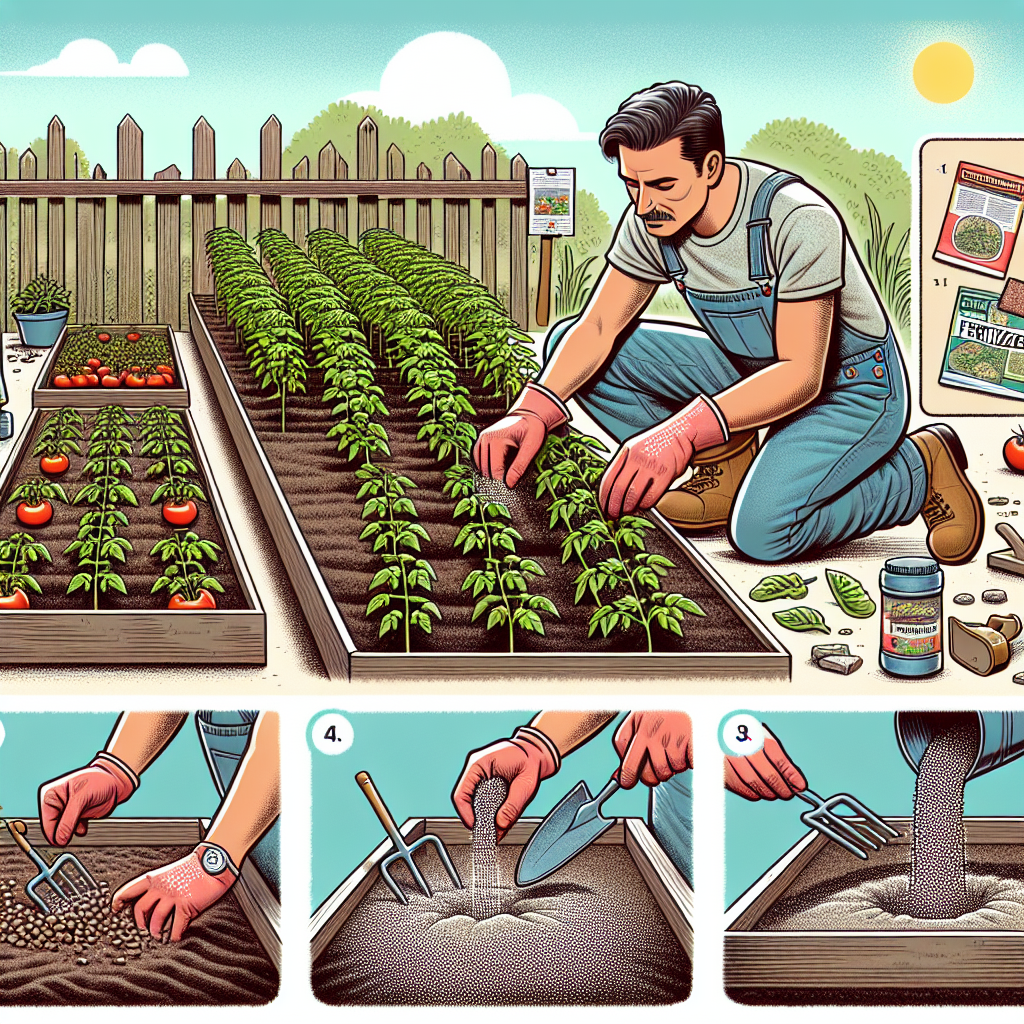
How to fertilize tomato seedlings
How to Fertilize Tomato Seedlings: A Comprehensive Guide
Growing tomatoes can be a delightful venture for gardeners of all experience levels. One of the keys to achieving a bountiful harvest lies in understanding how to properly care for your tomato seedlings. Among the various aspects of care, fertilization plays a crucial role in promoting healthy growth, ensuring strong root systems, and enhancing overall productivity. This article will explore effective methods, timing, and types of fertilizers to use, along with helpful tips on how to fertilize your tomato seedlings.
Understanding Tomato Seedling Nutritional Needs
Before delving into the specifics of fertilization, it’s essential to understand the nutritional requirements of tomato seedlings. Tomatoes are heavy feeders, meaning they require a significant amount of nutrients for proper growth. The three primary nutrients that tomatoes need are:
- Nitrogen (N) - Essential for leaf and stem growth.
- Phosphorus (P) - Important for root development and flower formation.
- Potassium (K) - Vital for fruit quality and overall plant health.
In addition to these macronutrients, tomatoes also require a variety of micronutrients, including calcium, magnesium, and sulfur, among others.
Timing Your Fertilization
Knowing when to fertilize your tomato seedlings is just as important as choosing the right fertilizer. Timing can significantly affect the growth and health of your tomatoes.
- Pre-Planting: Before planting your seedlings outdoors, it's beneficial to amend the soil with organic matter such as compost or well-rotted manure. This provides essential nutrients and improves soil structure.
- Upon Transplanting: When transplanting your seedlings into the garden or larger pots, add a starter fertilizer that is high in phosphorus. This will promote strong root development.
- At Flowering Stage: Once your plants begin to flower, switch to a fertilizer higher in potassium to enhance fruit set and improve fruit quality.
- During Fruiting: As your tomatoes start to ripen, continue fertilizing with a balanced fertilizer to help sustain production.
Types of Fertilizers for Tomato Seedlings
There are several different types of fertilizers available, and each has its advantages. Here’s a closer look at some common options:
- Organic Fertilizers: These include compost, well-rotted manure, fish emulsion, and seaweed extract. Organic fertilizers improve soil health and provide gradual nutrient release.
- Granular Fertilizers: These are dry formulations that can be applied directly to the soil. They come in both organic and synthetic forms and release nutrients slowly over time.
- Liquid Fertilizers: Often used for quick nutrient absorption, these can be mixed with water and applied directly to the soil or as a foliar spray.
- Slow-Release Fertilizers: These fertilizers are specially formulated to release nutrients over an extended period, making them convenient for busy gardeners.
How to Apply Fertilizer Effectively
Applying fertilizer correctly is key to maximizing its benefits. Here are some best practices:
- Read the Instructions: Always follow the manufacturer’s guidelines on the fertilizer's packaging to avoid over-fertilization.
- Soil Testing: If possible, conduct a soil test to determine existing nutrient levels and pH before applying any fertilizers.
- Even Distribution: When applying granular fertilizers, spread them evenly around the base of each plant, avoiding direct contact with the stems.
- Watering: After applying fertilizer, water the seedlings thoroughly to help dissolve the nutrients and facilitate their uptake by the roots.
- Foliar Feeding: For liquid fertilizers, spray in the early morning or late afternoon to prevent leaf burn from the sun.
Signs of Over-Fertilization
It's important to monitor your plants for signs of over-fertilization, which can be detrimental. Watch out for:
- Burnt leaf edges, which may indicate nutrient buildup.
- Pale or yellowing leaves, as excess nutrients may hinder the plant's ability to absorb others.
- Poor flowering or fruiting, signaling potential root damage.
Natural Alternatives to Chemical Fertilizers
If you're looking for natural ways to fertilize your tomato seedlings, consider these alternatives:
- Compost Tea: This liquid fertilizer is made by steeping compost in water. It enriches the soil with beneficial microorganisms alongside nutrients.
- Banana Peels: Rich in potassium, banana peels can be buried around the seedlings to slowly release nutrients.
- Coffee Grounds: These provide nitrogen and can be sprinkled around the seedlings or added to compost.
- Eggshells: Rich in calcium, crushed eggshells can be mixed into the soil to combat blossom end rot.
Common Mistakes to Avoid
When fertilizing your tomato seedlings, it's easy to make mistakes. Avoid the following:
- Over-Fertilizing: It’s better to under-fertilize than overdo it. Start with low doses and adjust according to your plant's response.
- Ignoring Soil Quality: Focus on improving the soil structure and nutrient profile rather than relying solely on fertilizers.
- Pushing Too Hard Too Soon: Give seedlings time to establish before applying heavy fertilizers.
- Neglecting Watering: Fertilizers need moisture to be effective, so always water your seedlings appropriately after application.
Conclusion
Fertilizing your tomato seedlings is a critical aspect of their care that can significantly impact your harvest. By understanding the nutritional needs, timing your fertilization, and applying fertilizers effectively, you can cultivate healthy, productive plants. Remember, moderation is key—over-fertilization can cause more harm than good. Use organic options when possible, and always keep an eye on your plants for signs of distress. With the right approach, you'll be well on your way to enjoying a thriving tomato garden.
"Success in growing tomatoes depends largely on understanding how to fertilize tomato seedlings effectively." - Tomato Growing Expert
Happy gardening!
By Guest, Published on September 17th, 2024